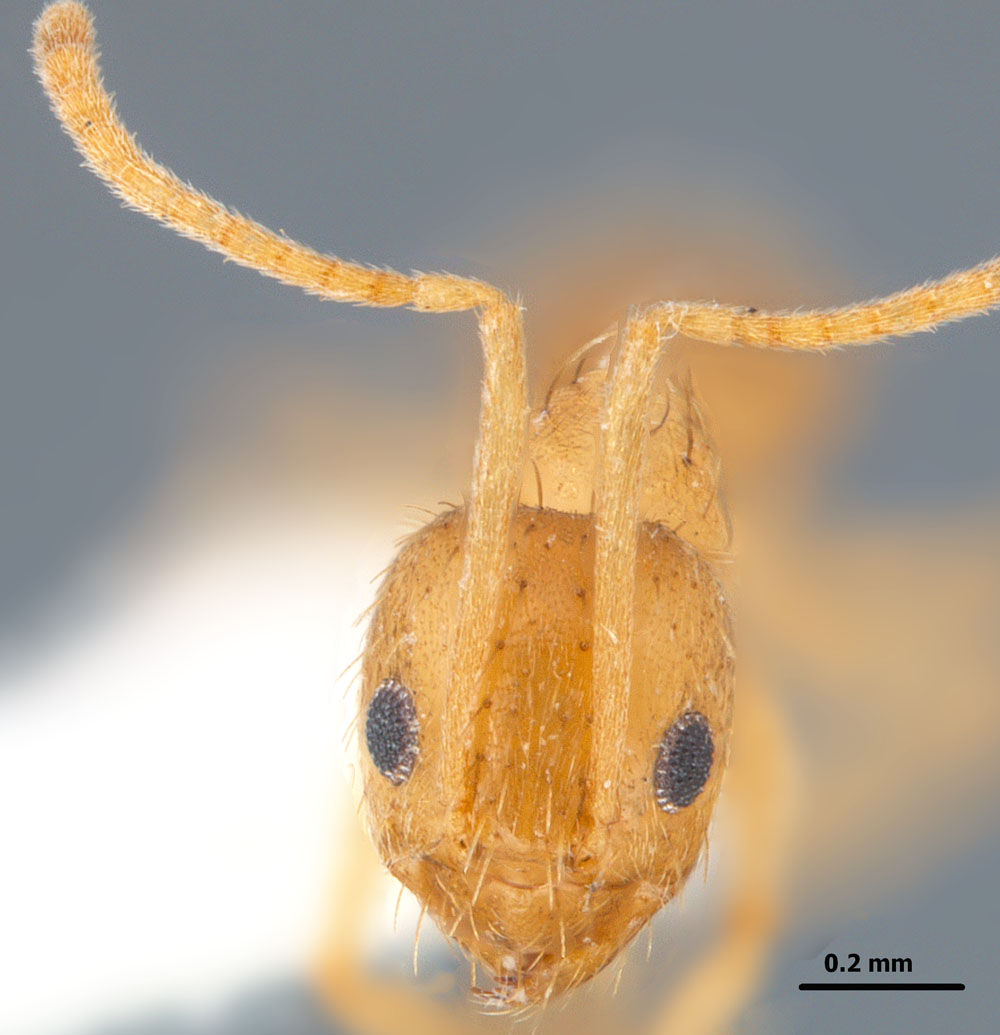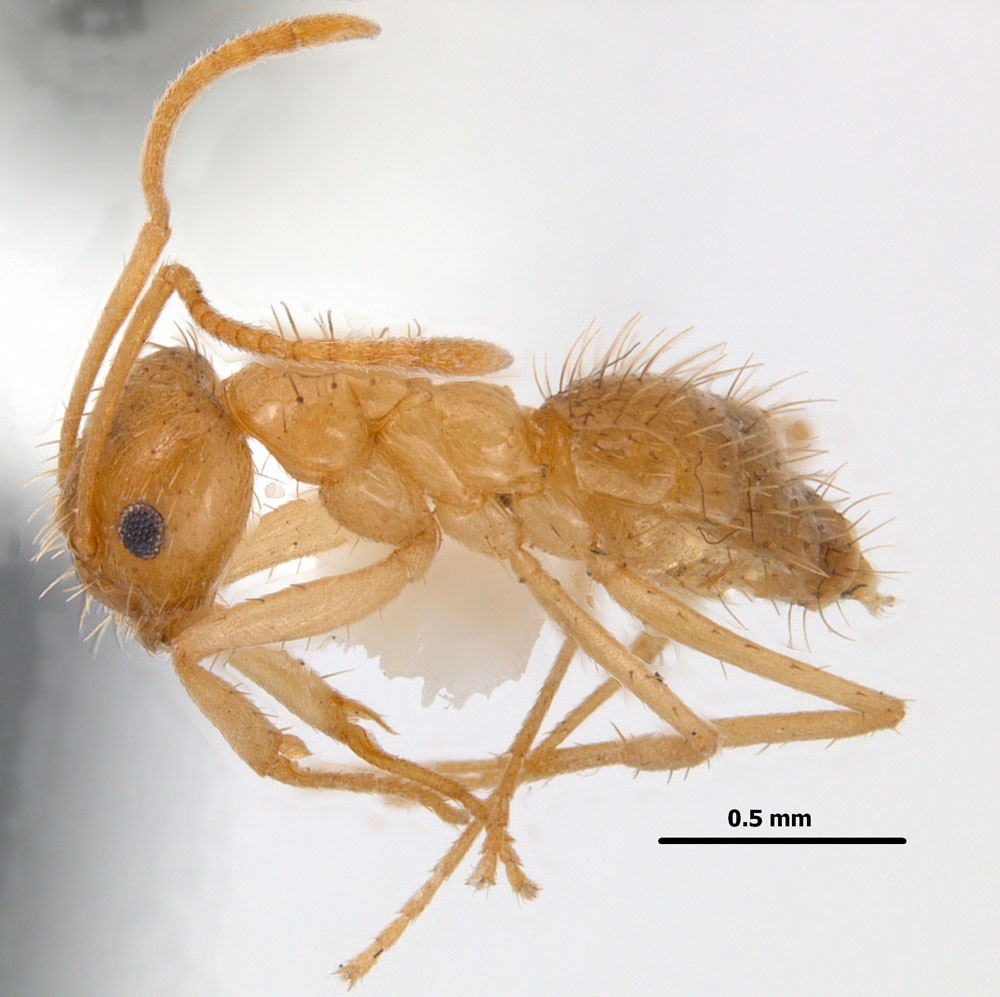Subfamily FORMICINAE Tribe LASIINI Nylanderia phantasma (Trager) |
|
Nylanderia phantasma, full face view of a worker (click image to enlarge). |
Nylanderia phantasma, side view of a worker (click image to enlarge). |
Introduction Trager (1984) revised the genus, then called Paratrechina, for the continental United States. LaPolla et al. (2010) elevated the subgenus Nylanderia to the generic level, which in effect, meant that all Nearctic Paratrechina species except for P. longicornis were now placed in Nylanderia. In 2012, Kallal and Lapolla (2012) revived the genus and provided an updated key for the Nearctic region. However, there are still some undescribed species in this group that which may be parasitic on other Nylanderia species. These species apparently do not have a worker caste, and the males are unusual in that they have characteristics of both males and workers. Nylanderia phantasma is a small, whitish to pale yellow species that is confined to deep coastal or inland sand dunes in the southeastern United States. Identification (from Trager 1984 and Kallal and LaPolla 2012) Female: 4.60-470 mm (TL). Pale yellow to yellowish-orange; cuticle smooth and shiny; body covered in dense whitish pubescence; macrochaetae whitish. Male: 1.84-2.16 mm (TL). Head and mesosoma light brown, gaster darker brown; scapes and legs yellowish-brown, meso- and metacoxae paler yellow brown. Pubescence on head moderate, mesonotum with dense pubescence, and gaster mostly lacking pubescence; macrochaetae and pubescence whitish. Genitalia with short, triangular parameres, digiti and cuspides long, slender, and curved toward each other. Nylanderia phantasma is most similar to N. arenivaga, but is smaller, and has only 0-4 scape macrochaetae, and restricted to deep white sand habitats. Biology and Economic Importance Distribution ReferencesKallal, R. J. and J. S. LaPolla. 2012. Monograph of Nylanderia (Hymenoptera: Formicidae) of the World, Part II: Nylanderia in the Nearctic. Zootaxa 3508: 1-64. Lapolla, J. S., S. G. Brady, and S. O. Shattuck. 2010. Phylogeny and taxonomy of the Prenolepis genus-group of ants (Hymenoptera: Formicidae). Systematic Entomology 35: 118-131. Trager, J. C. 1984. A revision of the genus Paratrechina (Hymenoptera: Formicidae) of the continental United States. Sociobiology 9: 49-162. Links |
|




